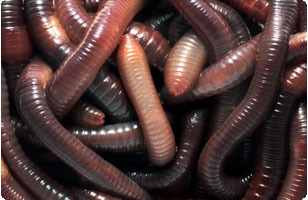The History of Bait
Canadian night crawlers or dew worms have long been a favourite of North American fishermen. Night crawlers are arguably the most popular type of live bait for catching a variety of fresh water fish including bass, trout, catfish, and walleye.The Canadian variety is the larger of the two species of night crawler (the other being European), growing up to 14 inches in length, and is highly prized for its resiliency. The worm can remain active in cold water for several minutes and is easy to bait on a hook without it falling apart. This resiliency also makes the species ideal for the live bait market, since the worms are easy to transport and have a long shelf life (up to 20 weeks) if kept cool.
The Canadian night crawler is only found in certain regions of North America with the majority of worms used for live bait being harvested in Ontario and in the Appalachian mountains extending towards New York and North Carolina. The worms are harvested from specialized farms, golf courses and open pastures starting in spring and extending into late fall to supply the seasonal demand for live bait.
Due to their preference for cooler temperatures and low density environments, night crawlers are difficult to cultivate and must be harvested naturally. Night crawlers are typically handpicked during the night following a significant rainfall when they are most likely to surface in order to feed or mate. The quality of the worms can vary significantly depending on the weather conditions, time of year and type of field from which they are harvested. South-western Ontario has particularly favourable soil and weather conditions for earthworms, which explains the regions importance for the live bait industry over the last three decades.

